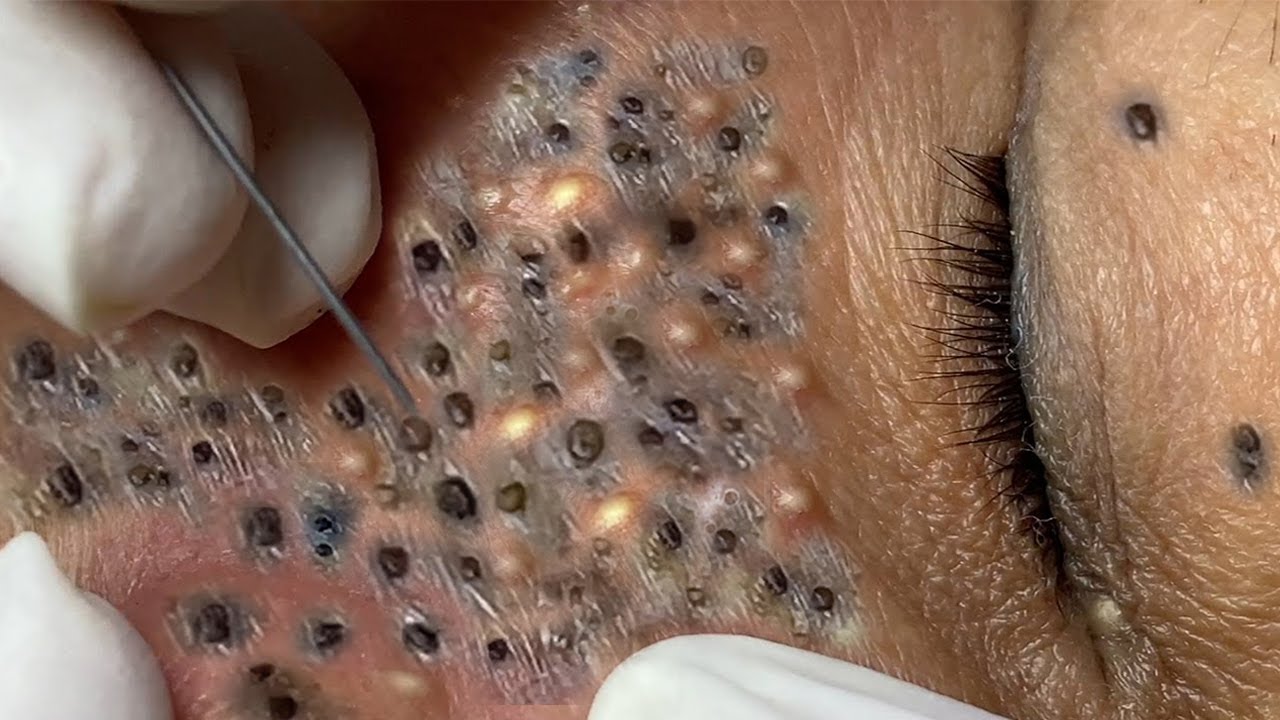1. Exfoliation
Exfoliating regularly is one of the most effective ways to prevent blackheads. Exfoliation removes dead skin cells, which can clog pores and lead to blackheads.
Chemical Exfoliants:
-
Salicylic Acid (BHA): Salicylic acid is a beta hydroxy acid (BHA) that penetrates deeply into the pores, helping to dissolve the oil and dead skin cells that can cause blockages. It’s particularly effective for blackheads and acne.
-
Study: A 2018 study published in the International Journal of Dermatology showed that salicylic acid is effective in treating acne and blackheads due to its ability to exfoliate the skin and keep pores clear.
-
Source: PubMed – Salicylic acid and acne
-
Glycolic Acid (AHA): Glycolic acid is an alpha hydroxy acid (AHA) that works by removing dead skin cells from the surface of the skin. While it doesn’t penetrate as deeply as salicylic acid, it still helps in preventing clogged pores by removing excess buildup.
-
Reference: The Journal of Clinical and Aesthetic Dermatology suggests glycolic acid as a part of acne treatments because of its ability to exfoliate and improve skin texture.
-
Source: J Clin Aesthet Dermatol – AHA and acne
Physical Exfoliants:
These include scrubs and brushes. However, you should use them sparingly, as overuse can cause microtears in the skin, leading to irritation or more breakouts.
2. Using a Blackhead Remover Tool
Blackhead remover tools, often known as comedone extractors, are small metal devices designed to help extract blackheads manually. While they can be effective, they must be used correctly to avoid injury or scarring.
3. Pore Strips
Pore strips are adhesive strips that adhere to the skin and pull out dirt and blackheads when removed. They’re particularly popular for blackhead removal on the nose.
Pros:
Cons:
-
May only remove surface blackheads, leaving the root cause intact.
-
Can irritate sensitive skin or worsen acne if used too frequently.
-
Research: While pore strips can offer short-term blackhead removal, they do not prevent blackhead formation in the long term, as they don’t address the underlying cause (i.e., excessive oil production).
4. Clay Masks
Clay masks, such as those containing activated charcoal or bentonite clay, are great for drawing out impurities and absorbing excess oil. They can be particularly helpful for oily skin prone to blackheads.
How They Work:
-
Clay: Works by absorbing oils and impurities from the skin and helps in the treatment of blackheads by preventing pores from becoming clogged.
-
Activated Charcoal: This is highly porous and can attract and bind dirt, oils, and toxins from the skin’s surface.
-
Study: According to a study in The Journal of Clinical Aesthetic Dermatology, clay masks are effective in treating acne by drawing out toxins and preventing pore blockages.
5. Retinoids
Topical retinoids (such as retinol, tretinoin) are Vitamin A derivatives that speed up cell turnover and prevent the accumulation of dead skin cells in pores. They also help in the prevention of acne and blackheads.
How They Work:
-
Speeding Up Skin Cell Turnover: Retinoids accelerate the shedding of dead skin cells, which prevents them from clogging pores.
-
Reducing Pore Size: Over time, regular use of retinoids can help shrink enlarged pores, preventing the accumulation of debris.
-
Clinical Evidence: Studies show that retinoids are effective for treating blackheads and improving skin texture. A study in Dermatology and Therapy concluded that retinoids are highly effective in managing acne and blackheads.
6. Professional Treatments
If blackheads are persistent or difficult to manage at home, professional treatments from dermatologists or estheticians can be very effective.
Options:
-
Facials with Extractions: Professionals can safely extract blackheads and provide treatments to prevent future breakouts.
-
Chemical Peels: These are stronger than over-the-counter treatments and can exfoliate deeply to reduce blackheads.
-
Microdermabrasion: A procedure that uses fine crystals or a diamond-tipped wand to exfoliate the skin, removing surface debris that can contribute to blackhead formation.
-
Study: Research published in The Journal of Clinical and Aesthetic Dermatology found that professional facials with extractions can significantly improve the appearance of skin with blackheads and acne.
Preventing Blackheads: Key Tips
-
Avoid Over-Washing: Washing your face too often can strip your skin of natural oils, causing it to produce more oil, which can worsen blackheads.
-
Non-Comedogenic Products: Always choose skincare and makeup products labeled as “non-comedogenic,” meaning they won’t clog your pores.
-
Hydration: Keep your skin moisturized. Paradoxically, dry skin can lead to excess oil production, which contributes to blackhead formation.
Conclusion
Managing blackheads involves a combination of prevention and treatment. Regular exfoliation with salicylic acid, using professional tools correctly, and incorporating products like retinoids or clay masks can all contribute to clearer skin. However, if blackheads persist, consulting a dermatologist may be necessary to determine the best course of action.
Let me know if you need further explanations or help choosing products!
